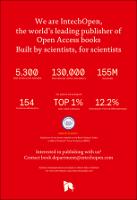Chapter Ultra-Thin Plasma-Polymerized Functional Coatings for Biosensing: Polyacrylic Acid, Polystyrene and Their Co-Polymer
Author(s)
Castellino, Micaela
Rivolo, Paola
Ricciardi, Serena
Frascella, Francesca
Language
EnglishAbstract
The photocatalytic properties of titanium dioxide have been widely studied over recent decades since the discovery of water photolysis by TiO2 electrodes in 1972. Titanium dioxide has three main crystal polymorphs; anatase, rutile and brookite and rutile is the most common as the metastable polymorph. Each polymorph has different band gap positions. Anatase’s band gap is 3.2 eV, higher than rutile’s which is 3.0 eV. This difference in the band gap will determine their optimum UV wavelength range to promote a photocatalytic process. There are different methods to assess the photocatalytic activity of a material. The most commonly used method is the degradation of a dye in aqueous solution under UV light, due to its simplicity. Under these conditions the decomposition rate of a suitable organic dye is used as a measure of activity. Physical properties such as particle size and surface area will determine the effective area that will interact and absorb the dye prior to degradation. The physical mechanisms involved in such aqueous based methods differ from gas phase reactions. More advanced techniques use mass spectrometers to evaluate photocatalytic activity of titanium dioxide in the gas phase. An effective photocatalyst for heterogeneous reactions in the gas phase is one which is efficient at creating radicals as a result of an absorbed photon.
Keywords
photocatalysis, UV irradiation, nitrogen dioxide, methylene blue reduction, mass spectrometerDOI
10.5772/62899Publisher
InTechOpenPublisher website
https://www.intechopen.com/Publication date and place
2016Classification
Condensed matter physics (liquid state & solid state physics)


 Download
Download